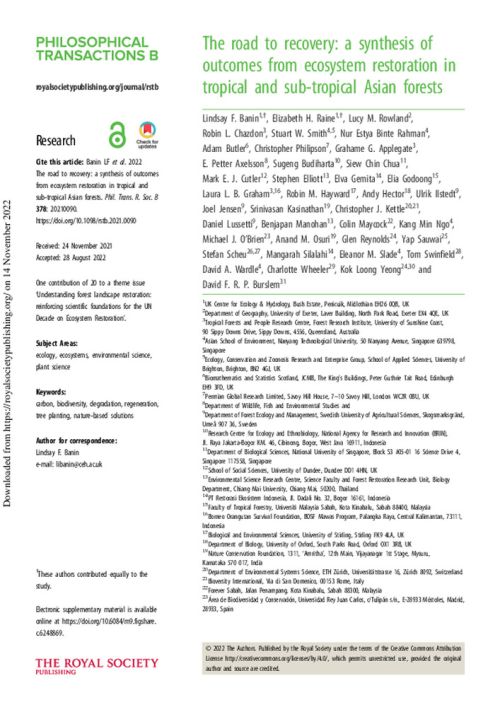The road to recovery: a synthesis of outcomes from ecosystem restoration in tropical and sub-tropical Asian forests

Abstract: Current policy is driving renewed impetus to restore forests to return ecological function, protect species, sequester carbon and secure livelihoods. Here we assess the contribution of tree planting to ecosystem restoration in tropical and sub-tropical Asia; we synthesize evidence on mortality and growth of planted trees at 176 sites and assess structural and biodiversity recovery of co-located actively restored and naturally regenerating forest plots. Mean mortality of planted trees was 18% 1 year after planting, increasing to 44% after 5 years. Mortality varied strongly by site and was typically ca 20% higher in open areas than degraded forest, with height at planting positively affecting survival. Size-standardized growth rates were negatively related to species-level wood density in degraded forest and plantations enrichment settings. Based on community-level data from 11 landscapes, active restoration resulted in faster accumulation of tree basal area and structural properties were closer to old-growth reference sites, relative to natural regeneration, but tree species richness did not differ. High variability in outcomes across sites indicates that planting for restoration is potentially rewarding but risky and context-dependent. Restoration projects must prepare for and manage commonly occurring challenges and align with efforts to protect and reconnect remaining forest areas.
The abstract of this article is available in Bahasa Indonesia in the electronic supplementary material.
This article is part of the theme issue ‘Understanding forest landscape restoration: reinforcing scientific foundations for the UN Decade on Ecosystem Restoration’.


